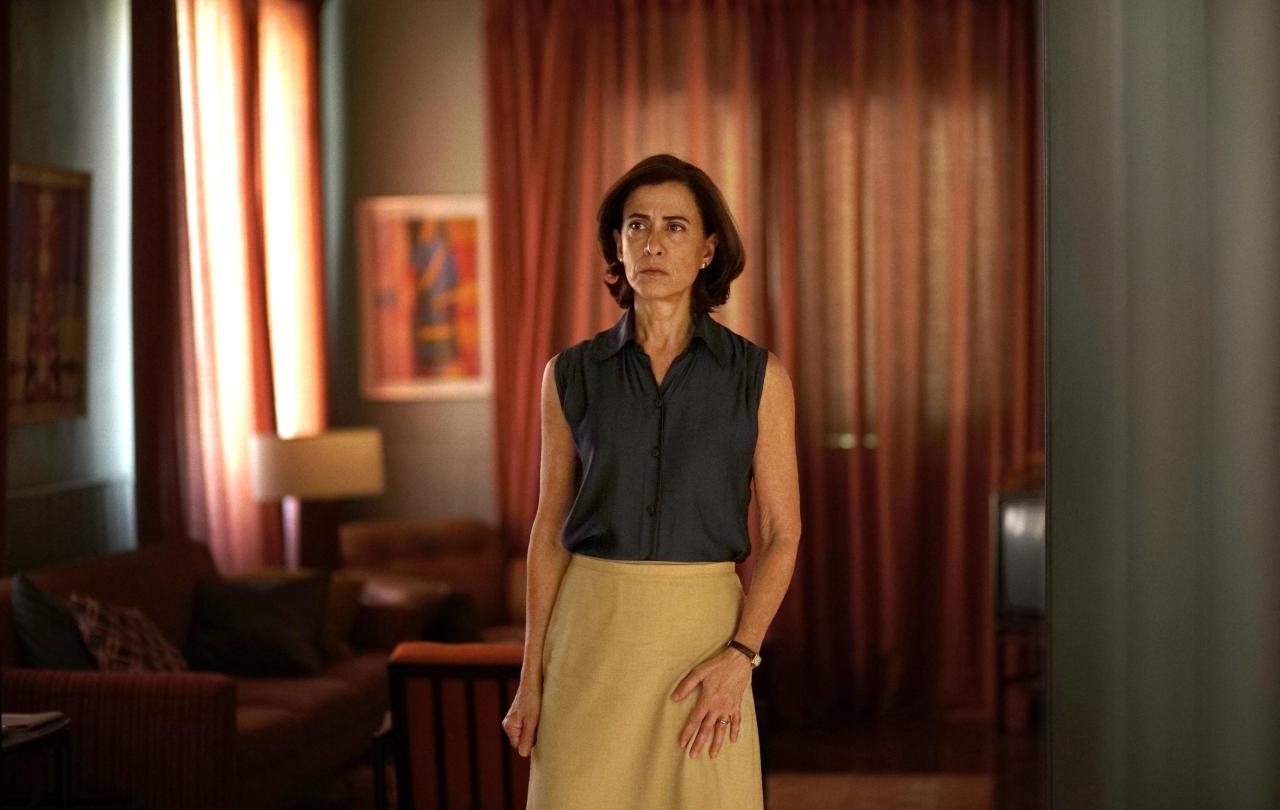
The other week in Brazil, crowds were heard jubilantly celebrating: “Brazil! Brazil!” The characteristically enthusiastic nature of their celebration might make you think there had been a football victory. But the victory was in fact the Oscar win for I’m Still Here, the Walter Salles directed movie – a first time win for Brazil in Best International Picture. And Brazil should be proud. As the credits rolled in an independent cinema, I sat in stunned silence. I’m Still Here is a moving and expertly crafted portrayal of family life under tyranny. The film gives a tragic account of the insidious and destructive nature of authoritarian untruth - yet also a celebration of the defiant resistance of unsung heroes in the face of evil.
Set in 1970’s Rio de Janeiro during a military dictatorship that lasted for 21 years, the film centres around the true story of the Paiva family. The father, Rubens Paiva (Selton Mello), a former dissident congressman, is abducted by the military for interrogation and disappears; the mother, Eunice Paiva (Fernanda Torres), who herself is imprisoned and tortured for 12 days, is left to keep the family together and continue the search for her husband.
At this point, I should admit that this review is not unbiased, as I have been to Brazil six times, and have an enthusiastic interest in its history and culture. And despite the sombre tone at the heart of the movie, I’m Still Here felt like a celebration of Brazil. The film opens with an ominous helicopter flying over a Rio beach, which leads us to the Paiva family enjoying the sun with their friends. The fun, vibrancy, and warmth that permeates the family gathering reminded me of much of what I love about Brazilian culture. Even in the midst of a repressive regime, at least for this family, the party goes on.
Unfortunately, the party doesn’t last for long.
Thirty minutes into the film, the relative harmony of the Paiva family’s world is sharply interrupted, when the military police arrive at their home and announce that Rubens is wanted for interrogation. As the intruders close the curtains and doors, the light, warmth and music that permeated the start of the movie are muffled and suffocated. This scene plays like a microcosm for Brazilian society under authoritarian regime.
Historians Lilia M. Schwarcz and Heloisa Starling, in their book Brazil: A Biography document how on 14 December 1968, the Jornal do Brasil, a leading daily newspaper, published a special edition to surprise their readers, including a false weather report: ‘Suffocating temperature. Air unbreathable.’ The previous day, the military dictatorship had announced a law which suspended habeas corpus and freedom of expression, permitted the annulment of citizen’s rights, and determined that political trials would be conducted by military courts, with no right of appeal. This allowed the dictatorship to repress political dissent, and led to the mass disappearances of individuals suspected of anti-government activity.
We see this suffocation slowly take hold of Eunice Paiva. Here Fernanda Torres’ subtle yet arresting performance as the Paiva mother cannot be understated. As she tries to maintain a sense of normalcy in her family, protecting them from the truth, while also quietly and defiantly seeking her husband’s release, we hang on to her every word and nuance of expression.
Every confrontation she makes to the police is met with deflection, lies, and cover-up. We watch as the insidiously persuasive untruth of authoritarianism seems to triumph over integrity. We get this sense from the world around the Paiva family too – the radio only relays state-sanctioned news, and censors music deemed subversive. I’m reminded of George Orwell’s depiction of the Party in 1984, which enforces ‘doublethink’ on the populace: ‘to be conscious of complete truthfulness while telling carefully constructed lies … consciously to induce unconsciousness.’
Eunice can be seen as a counterpart to Orwell’s protagonist, Winston, who claimed ‘There was truth and there was untruth, and if you clung to the truth even against the whole world, you were not mad.’ This refusal to let go of truth carries Eunice Paiva, and us along with her.
While a song won’t take down a dictatorship overnight, it can get into your head, and stick there long enough to inspire some forms of resistance.
The presence of music in the movie likewise represents a significant thread of resistance to the regime’s propaganda and shrouded crimes. This is heard not just in the vibrant soundtrack of resistance music from the period, but also in the dark and hostile prison where Eunice Paiva is held. Amid screams from other inmates, Eunice hears a man sing out from another cell:
Samba:
Black,
strong, fearless,
Was harshly persecuted
On the corner, in the bar, in the yard.
He is quickly silenced by a guard, but the refrain memorialises the cry of the oppressed. While a song won’t take down a dictatorship overnight, it can get into your head, and stick there long enough to inspire some forms of resistance, to combat the ‘official’ narrative of events with a subversive counter-narrative.
Yet in I’m Still Here, the clearest act of resistance comes from the quiet but resolved determination of Eunice Paiva in her refusal to forget her husband, to let the untruth of dictatorship have the final say. I’m reminded of Hannah Arendt’s diagnosis of the ‘banality of evil’ in Nazi Germany. Under dictatorship, with the state’s obfuscatory erasure of its misdeeds, evil becomes normalised, losing its shock, its horror. In this way, atrocities can continue to be committed with impunity.
But Eunice Paiva’s story reminds us, in Schwarz and Starling’s words: ‘nothing can be completely extinguished, and no one disappears completely without someone remembering their name.' As Chico Buarque, a Brazilian musician foresaw:
The banal of today
Will be in journals someday.
One aspect of Eunice’s story the film does not portray is her faith. According to her children, she would attend Catholic Mass every week, partaking of bread and wine to remember Christ’s death. I’m curious what influence this continued reminder of the crucifixion of Jesus had on her.
There are other examples of resistance in Brazil that were explicitly motivated by the image of the cross. Schwarz and Starling recount the opposition of a group of Catholic bishops who used the Church’s communication channels to disclose internationally what was happening in Brazil. One Catholic father, who was personal assistant to the Archbishop of Olinda and Recife, working on international human rights, was kidnapped, tortured and killed.
In 1970 the Saint-Germain-des-Prés Church in Paris displayed a handcuffed Christ on the altar with a tube in his mouth and a magneto (small generator for applying electric shocks) on the top of the Cross. Above the Cross the words from the Brazilian flag ‘Ordem e Progresso’ were inscribed.
While we can see the strong parallels between Jesus’ death at the hands of Roman imperial oppressors and the unjust torture of thousands under military dictatorship, the message of the Cross goes even deeper than this.
The Cross has been throughout centuries a revelation of all of humanity’s deepest wickedness, and not only that, a confrontation of our tendency to evade accountability, to create untruths to hide atrocities, to make evil banal. Yet as Christians of different denominations commemorate the crucifixion at Holy Communion, Eucharist, Mass, we are reminded of a God who suffers for the sins of the world. Perhaps this meal nourished Eunice Paiva in her fight against tyranny. Perhaps this memorial of a suffering saviour served as an inspiration to retain the memory of all those who suffer, to expose the evils that so often go unseen.
In any case, I’m Still Here, while giving an honest critique of Brazil’s history, ends up being a memorial - even a celebration - of the resilient, Brazilian spirit, exemplified in the lives of families like the Paivas.
Celebrate our Second Birthday!
Since March 2023, our readers have enjoyed over 1,000 articles. All for free. This is made possible through the generosity of our amazing community of supporters.
If you’re enjoying Seen & Unseen, would you consider making a gift towards our work?
Do so by joining Behind The Seen. Alongside other benefits, you’ll receive an extra fortnightly email from me sharing my reading and reflections on the ideas that are shaping our times.
Graham Tomlin
Editor-in-Chief





